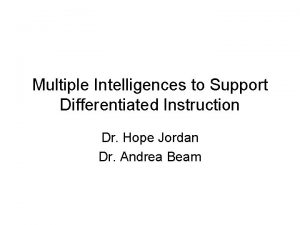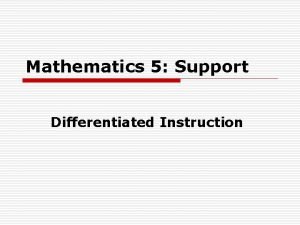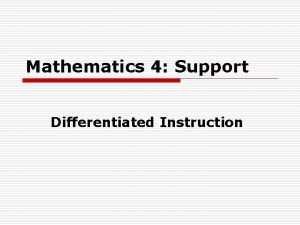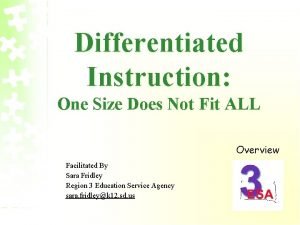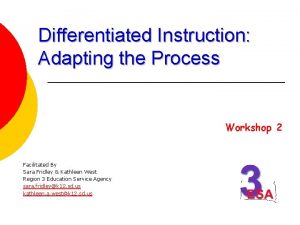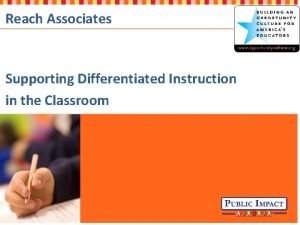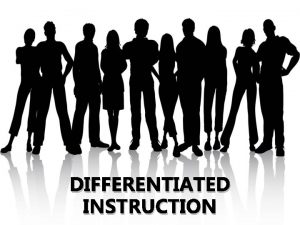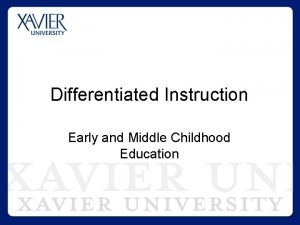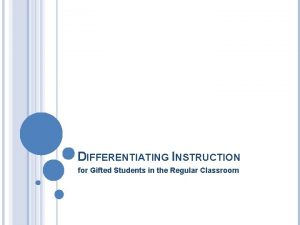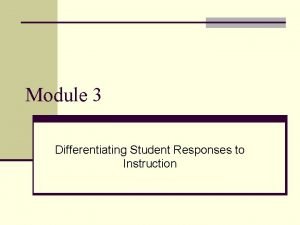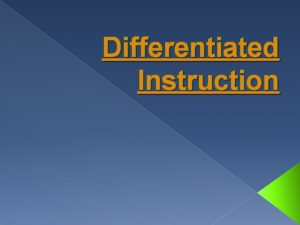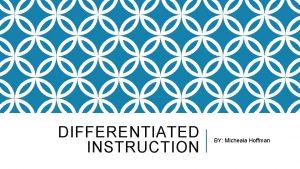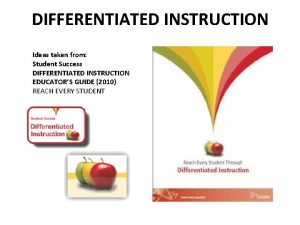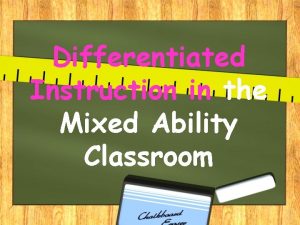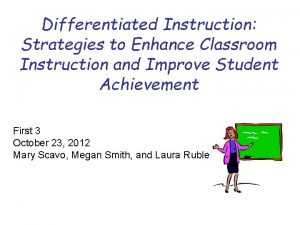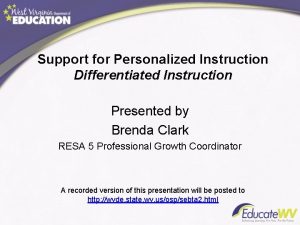Differentiated Instruction What is your understanding of DI











- Slides: 11

Differentiated Instruction What is your understanding of DI? http: //www. edu. gov. on. ca/eng/general/elemsec/speced/ learningforall 2011. pdf http: //www. edugains. ca/resources. DI/Educators. Packages /DIEducators. Package 2010/2010 Educators. Guide. pdf

“Differentiated instruction is a cyclical process of finding out about the learner and responding by differentiating. As we continue to learn more about the learner, we respond by differentiating instruction with increased precision and effectiveness”

Wikipedia Says… DI - a framework or philosophy for effective teaching that involves providing studentswith different avenues to acquiring content; to processing, constructing, or making sense of ideas; and to developing teaching materials and assessment measures so that all students within a classroom can learn effectively, regardless of differences in ability

“providing students with different avenues to acquiring content” Multiple Intelligences Mathematical, Bodily Kinesthetic, Spatial, Linguistic, Musical, Interpersonal, Intrapersonal, Naturalistic, Existential, What are some ways to appeal to different intelligences?

“providing students with different avenues …to processing, constructing, or making sense of ideas” How can we allow students to be creative and explore concepts for themselves? Examples: Super ball inquiry, Dissections, Popcorn Cell phone variables,

Key Features 1. Flexible Learning Groups Provide students with opportunities to work in a variety of groups that vary over time based on student readiness, interests and learning preferences 2. Choice Provides students with personalized opportunities to connect with their prior knowledge, interests and learning preferences, allowing for a sense of ownership, self-motivation and a commitment to their own learning 3. Respectful Tasks Are equally engaging, promote high expectations and optimal achievement for all students and are assessed using the same assessment criteria 4. Shared Responsibility for Learning Develops when students are supported in developing the knowledge and skills required for them to self-assess and learn independently

“developing teaching materials and assessment measures so that all students within a classroom can learn effectively” How can we differentiated assessment/evaluation? Test? Lesson? Assignment?

“learn effectively, regardless of differences in ability” • Ideally we would like a task to be equally challenging for all students in the class • Focus on the process of learning, not the product How can we vary the degree of complexity of a laboratory investigation? Examples: Super ball inquiry, POE, footprints,

A Classroom with DI • Variety of learning stations • Flexible learning groups • Different forms of evaluation (drawings, essays, mind-maps) that demonstrate the same expectations • Self directed learning (covering curriculum expectations)

Knowing the Learner Knowing Student: Readiness Interests Learning Preferences Readiness – diagnostic assessment, OCT, Interests – Questions at the beginning of a unit, Learning Preference – Learning style/strenght inventory

Examples of DI
 Individualized instruction vs differentiated instruction
Individualized instruction vs differentiated instruction Multiple intelligences and differentiated instruction
Multiple intelligences and differentiated instruction Open ended questions examples
Open ended questions examples Entry points differentiated instruction
Entry points differentiated instruction Think dots differentiated instruction
Think dots differentiated instruction Think dots differentiated instruction
Think dots differentiated instruction Jigsaw differentiated instruction
Jigsaw differentiated instruction Ascd differentiated instruction
Ascd differentiated instruction Ldoe delivery recipes
Ldoe delivery recipes Differentiated instruction for gifted students
Differentiated instruction for gifted students Jigsaw differentiated instruction
Jigsaw differentiated instruction Direct instruction strategies
Direct instruction strategies

